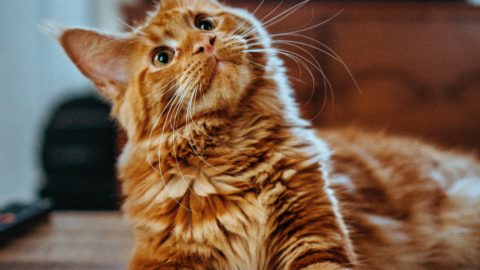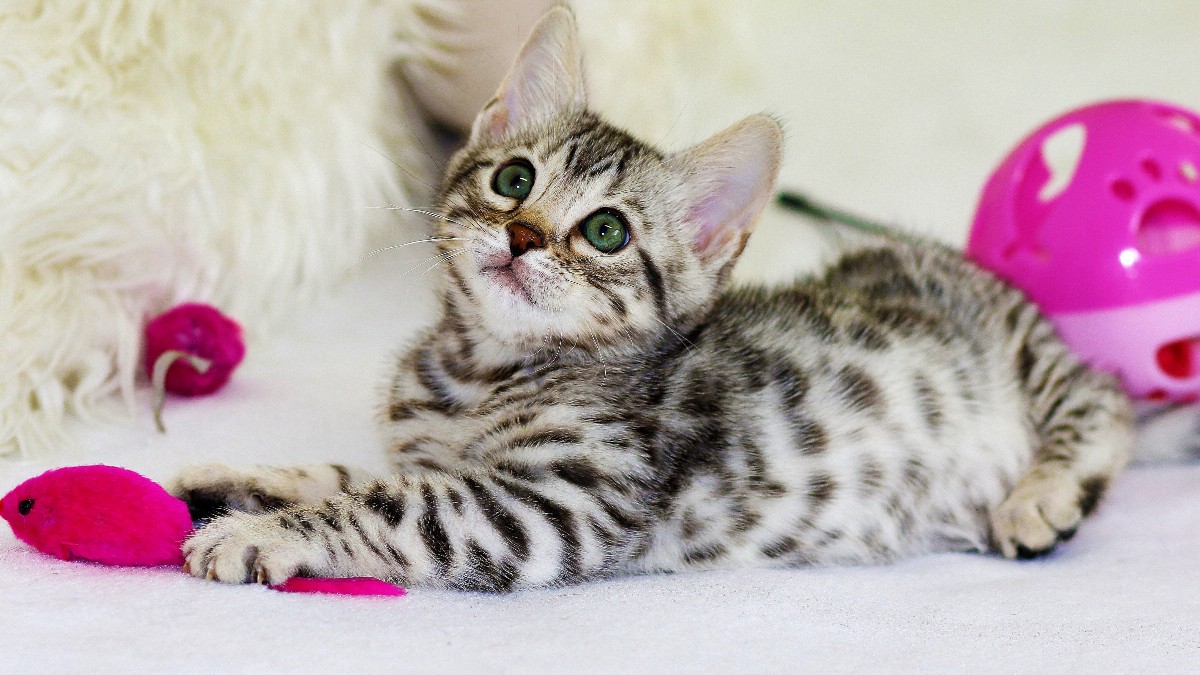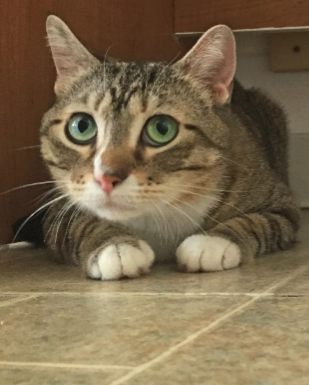In this excerpt from her pet behavior column, Dr. Megan Maxwell discusses the role that positive reinforcement can play in the behavior and training of pet cats:
Many pet owners are surprised to hear that their cats can learn new behavior in a manner similar to the way that dogs learn. The common stereotype is that cats are independent, stoic, and comically unimpressed with our attempts to train them. While it is quite true that cats and dogs have their own distinct species-specific sets of behavior, there are also distinct commonalities in how dogs and cats learn and thus how we can teach and train them.
Both dogs and cats respond to positive reinforcement. Positive reinforcement occurs when an animal’s behavior produces a desirable consequence and thus begins to happen more often. For example, a cat may come into the kitchen and meow, causing the owner to serve the cat his food. If this happens repeatedly, the cat may continue meowing for his dinner in the future.
In some cases, we unintentionally reinforce our pets’ unwanted behavior. For example, I’ve had many clients who are in a real pickle by the time they call me to describe how their cats persistently wake them in the middle of the night. The cat will jump into the bed, meow, walk over them, and even bat them in the face. When I ask owners how they have responded to this, they sometimes explain that they will wake up and feed the cat. Eventually feeding the cat becomes the only way to make the night-time harassment end. Now the cat and the owner have entered into a vicious reinforcement cycle – the cat’s pestering behavior is rewarded with a nighttime snack and the owner’s snack-giving is rewarded by being able to get back to sleep!
In other cases, we use positive reinforcement intentionally to teach a cat a trick or to strengthen other desirable behavior. Owners may use a cat treat or pinch of tuna as a lure by holding it just over a cat’s nose and moving it slowly over the cat’s head until the cat sits, at which point the owner can praise and deliver the bite to reward the Sit. When this starts happening reliably, the owner might put the behavior on cue by saying “Sit” just before the cat’s rear end hits the floor. Soon, the owner can raise an empty hand in a Sit gestural cue, say “Sit”, and then praise and treat the cat, who has now learned how to sit on command. This process is accomplished in the same way many dogs are taught to sit. Cats can learn all sorts of parlor tricks using positive reinforcement. In fact, cats used in commercials and movies are taught using positive reinforcement in the form of treats, often with the added help of a clicker to mark and reward desired behavior.
The most common behavior problems I am called in to address in cats are aggression (between cats or toward people), house soiling, fearful behavior, and obsessive behavior. In almost all of these cases, there are new responses we must teach to replace the problem behavior. Here again, we use positive reinforcement in a manner identical to that which we use with dogs. For example, if an owner is being ambushed by his cat, who hides under a cabinet and leaps out to bite his ankles, I instruct the owner to reinforce a new behavior in place of the ankle biting. I might have the owner toss a cat toy ahead of himself as he walks through the hallway, so that the cat’s pouncing is targeted onto the toy instead. To address the night-time harassment described earlier, I might first have the owner wake by alarm to feed the cat earlier in the night, before any pestering has begun, so that quiet behavior is rewarded with a snack. Over nights, I would have the owner wake earlier and earlier until the owner is providing that bed-time snack conveniently before he goes to bed.
There are many ways in which cats and dogs differ. They have different social structures, they respond to different types of consequences, they alert to different stimuli in their environment, and they respond to the world with different forms of behavior. Yet there are some common laws of learning, such as the way by which positive reinforcement works, that apply across species and allow us to teach and train our cats and dogs using some similar processes and tactics.








